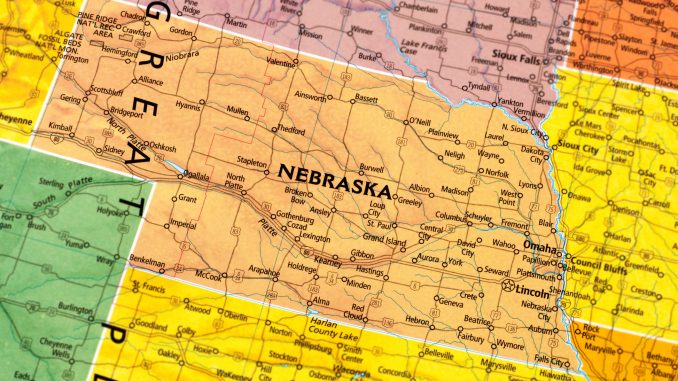
By John C. Zaher
Nebraska Republicans really stirred interest in the state’s unique methodology for allocating Electoral College votes. Currently, the Cornhusker State gives two of its votes to the presidential candidate who gets the most votes in the state, with the remaining three going to the respective winner in each congressional district.
Forty-eight states allocate their Electoral College votes on a winner-take-all basis. In Maine, the model is the same as Nebraska’s; two votes go to the winner of the popular votes, then one vote to the top vote getter in each congressional district, with an additional two votes up for grabs. It is also worth noting that Maine was the first state to use this method of vote allocation in 1972.
The way Nebraska distributes its electoral votes began in 1992. This year, there have been calls to make Nebraska a “winner take all” state. In April, state residents voted on — and rejected — a proposal to give all five Electoral College votes to the winning presidential candidate. Most recently, Congressional Republicans from the state pressured Governor Jim Pillen to change the way how the Electoral College votes are distributed.
The lone holdout in the state Legislature was State Senator Mike McDonnell, a former Democrat turned Republican representing the state’s sole “blue” district. Despite calls for him to support the “winner take all” system, McDonnell said it would not be right to do so, given that it was too close to the election.
The district in question, known as the “blue dot,” is Nebraska’s 2nd Congressional District, which entails the city of Omaha. Barack Obama won that district in 2008 and Joe Biden won it in 2020. This district may be the tie-breaker as to whether Trump or his Democratic challenger, Kamala Harris, will be the first to win 270 Electoral College votes.
The 2nd District is unique because Nebraska is otherwise a heavily Republican state. Trump won all five votes in 2016, beating Hillary Clinton 60.3%-34.0%. In 2020, Trump got four votes, losing in the 2nd District, but garnering 58.2% of the vote statewide.
If all states adopted Nebraska’s model, the presidential race would be a lot more competitive. Candidates would have to appeal to a wider range of voters. This means they would have to spend more time in suburban and rural areas they might not have otherwise visited. Under “winner take all,” candidates spend a majority of their time in larger swing states such as Pennsylvania, which has 19 votes, Florida (30), North Carolina (16), Arizona (11), Ohio (17), Michigan (15) and Wisconsin (10).
In addition, the greatest segment of the popular vote in the states is in the largest cities. Candidates know this and will concentrate their advertising in these cities, often in the form of television advertising. Allocating Electoral College votes to each congressional district would mean candidates would put less emphasis on the big cities and reach out to more suburban and rural voters.
Meanwhile, in states that are considered safe for the respective candidates, voters in safe states rarely see them. Democrats take New York and California for granted, while Republicans might skip over Florida, Texas, South Carolina and Ohio, the latter in which Trump got 52% of the vote in 2016 and 53% in 2020 and where he is leading Harris by 9.5 percentage points, according to 270toWin. If winner-take-all was replaced with the Nebraska model, candidates would have to visit almost every state and disburse their campaign ad dollars in their districts.
Finally, by getting rid of winner-take-all, not only would the race would be more competitive, voters would become more engaged. In 2020, Biden won in Georgia by only 12,000 votes. Why shouldn’t Trump have gotten any Electoral College votes? In New York, Trump won 41 of the 62 counties, yet Biden won New York with 60.9% of the vote. Had New York been like Nebraska, Trump would have won handily. A Nebraska-type system would make voters feel like their vote counts and not all the voting power would be concentrated in just one part of the state.

